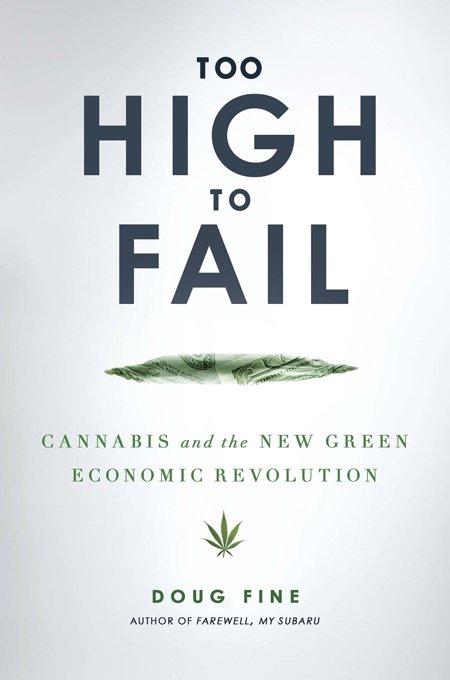
To someone who grew up in the Just Say No Era, in fact in an East Coast suburb where you're still, today, probably going downtown for a joint and might lose your kids, the Mendocino County situation that would allow such a cannabis/ law enforcement partnership immediately struck me as astonishing and important. The landmark Zip-Tie permitting experiment thus forms the narrative backdrop as I examine the potential for a legal nationwide cannabis economy to replace the massive, current largely illegal one. I conducted this examination by following a single plant over nine months from birth (that is, not from seed but from mother-plant clone cutting) to patient.
And that final medical destination was something I tried to keep firmly in mind over the course of the 2011 growing season. This was not always easy, since it sure takes a long time and a borderline excessive amount of work to get it there. But I knew it was crucial to remember that the entire raison d'être for the Mendocino cannabis industry as it existed in 2011 was to help people who use the plant as part of their medical treatment. That's what state law demanded.
It's important to understand, though, and the venture capitalists who are watching the industry very closely do understand, that the model on which I focus is mappable to other uses for cannabis: Other parts of the country might similarly benefit by growing cannabis as part of a domestic textile or food production resurgence, or for a domestic fuel source. Industrial varieties can also be useful in the building -- supply, cosmetics, and paint industry. But in the famous Emerald Triangle region of Northern California I studied, the cannabis varieties grown are, well, potent.
Even beyond medical limitations, farmers in Mendocino County, that charging front edge of the cannabis Green Rush, that first American county to fully end the Drug War, can (for now) only aspire to be legal if adhering to what the California courts (if not the governing cannabis legislation) seem to be shaping as a "not-for-profit collectively cultivated medicine by-and-for patients" model. Some other medical cannabis states, like Colorado, currently run a state-regulated for profit model.
So, "medical" it is in Mendocino County in 2011. Even if you believe, wrongly, that the whole idea of medical cannabis is a load of bunk, that is frankly irrelevant, from a "bailing out bankrupt governmental coffers at all levels from the federal to the local"perspective. In fact, the fellow whose department benefits from the proceeds of the Zip-Tie Program, the very fellow evangelizing Ordinance 9. 31 in neighboring counties and states, more or less agrees with you.
The first time I met with Sheriff Allman, in his office full of valor citations and flanked in the hallway by framed photos of every other county sheriff since Mendocino's 1850 incorporation, he told me that, in his view, "maybe five percent" of medical cannabis claims were legit.
That's his view, not the law's: The wording of California's successful 1996 Proposition 215 ballot initiative allows for medical use of cannabis to treat "any... illness for which marijuana provides relief." Some other state programs are much more restrictive -- in cases like New Jersey and New Mexico perhaps too much so, as a glance at the body of medical research indicates.
During our second interview, Sheriff Tom (it's an informal county) said something telling while giving me what I had learned is the standard honest law enforcer's line about how much he'd rather get a call that involves someone using cannabis than an alcohol-related one, let alone one involving cocaine, meth, or prescription drug abuse. I think the way he phrased it was, "I've never seen a stoned man beat his wife -- he generally just plays video games."

Copyright courtesy of Gotham Books, Too High to Fail by Doug Fine 2012